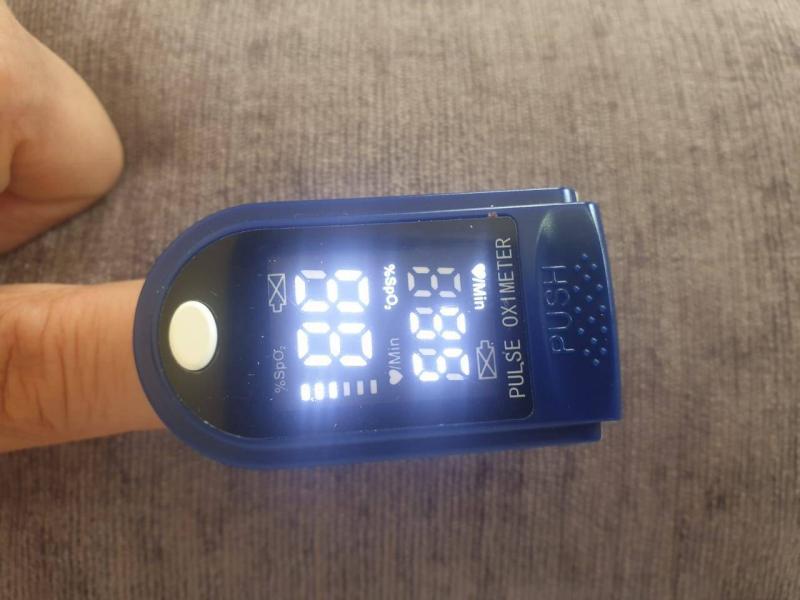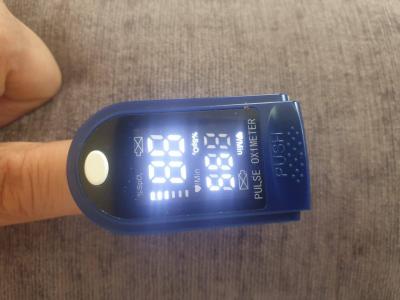A new study sheds light on why many COVID-19 patients, even those not hospitalized, suffer from oxygen deficiency that can develop and threaten their lives at certain stages of the infection. This study, published in the journal "Stem Cell Reports" and conducted by researchers from the University of Alberta, also explains why the anti-inflammatory drug "dexamethasone" is an effective treatment for those infected with the virus, according to Medical Xpress.
The study's lead author, Shakoor Allahyari, an associate professor at the School of Medicine and Dentistry, stated, "Low blood oxygen levels have been a significant issue among COVID-19 patients. We believe one possible mechanism is that COVID-19 affects the production of red blood cells."
In their new study, Allahyari and his team examined the blood of 128 COVID-19 patients, including those who were critically ill and admitted to intensive care, those with moderate symptoms hospitalized, and those with mild cases who spent only a few hours in the hospital. They found that as disease severity increased, immature red blood cells flooded into the bloodstream, sometimes making up to 60% of the total blood cells. In comparison, immature red blood cells make up less than 1%, or are nonexistent, in healthy individuals.
Allahyari explained, "Immature red blood cells reside in the bone marrow and are not normally seen in the bloodstream. This indicates that the virus affects the source of these cells. As a result, to compensate for the depletion of healthy mature red blood cells, the body produces more of them significantly to supply enough oxygen to the body."
The problem is that immature red blood cells do not transport oxygen (only mature red blood cells do). Another issue is that immature red blood cells are highly susceptible to COVID-19 infection. When the virus attacks and destroys these immature red blood cells, the body becomes unable to replace the mature red blood cells, which only live for about 120 days, leading to reduced oxygen transport capacity in the bloodstream.
The question was how the virus infects immature red blood cells. Allahyari, known for previous work showing that immature red blood cells make certain cells more susceptible to HIV, began investigating whether immature red blood cells contain receptors for SARS-CoV-2. After a series of studies, his team became the first in the world to demonstrate that immature red blood cells express the ACE2 receptor and the co-receptor TMPRSS2, which allowed SARS-CoV-2 to infect them.
Working in collaboration with virologist Loren Terwilliger's lab at the University of Alberta, the team conducted an investigative infection test using immature red blood cells from COVID-19 patients and proved that these cells were infected by the SARS-CoV-2 virus.
Allahyari stated, "These results are exciting but show two important findings. First, immature red blood cells are the cells infected by the virus; when the virus kills them, it forces the body to try to meet the oxygen supply requirements by pumping more immature red blood cells from the bone marrow. But this only creates more targets for the virus. Secondly, immature red blood cells are actually immune-suppressive cells; they inhibit antibody production and suppress T-cell immunity against the virus, worsening the situation. Therefore, in this study, we illustrated that more immature red blood cells mean a weaker immune response against the virus."
After discovering that immature red blood cells have receptors that allow them to be infected by the coronavirus, the research team began testing several medications to see if they could reduce the exposure of immature red blood cells to the virus. Allahyari explained, "We tried the anti-inflammatory drug dexamethasone, which we knew helped reduce mortality and the duration of illness in COVID-19 patients, and we found a significant decrease in the infection of immature red blood cells."
When the team began exploring why dexamethasone had this effect, they identified two potential mechanisms: First, dexamethasone suppresses the ACE2 and TMPRSS2 receptor response to SARS-CoV-2 in immature red blood cells, thereby reducing the likelihood of infection. Secondly, dexamethasone increases the maturation rate of immature red blood cells, helping the cells expel their nucleus more quickly. Without the nucleus, there is no place for the virus to replicate.




